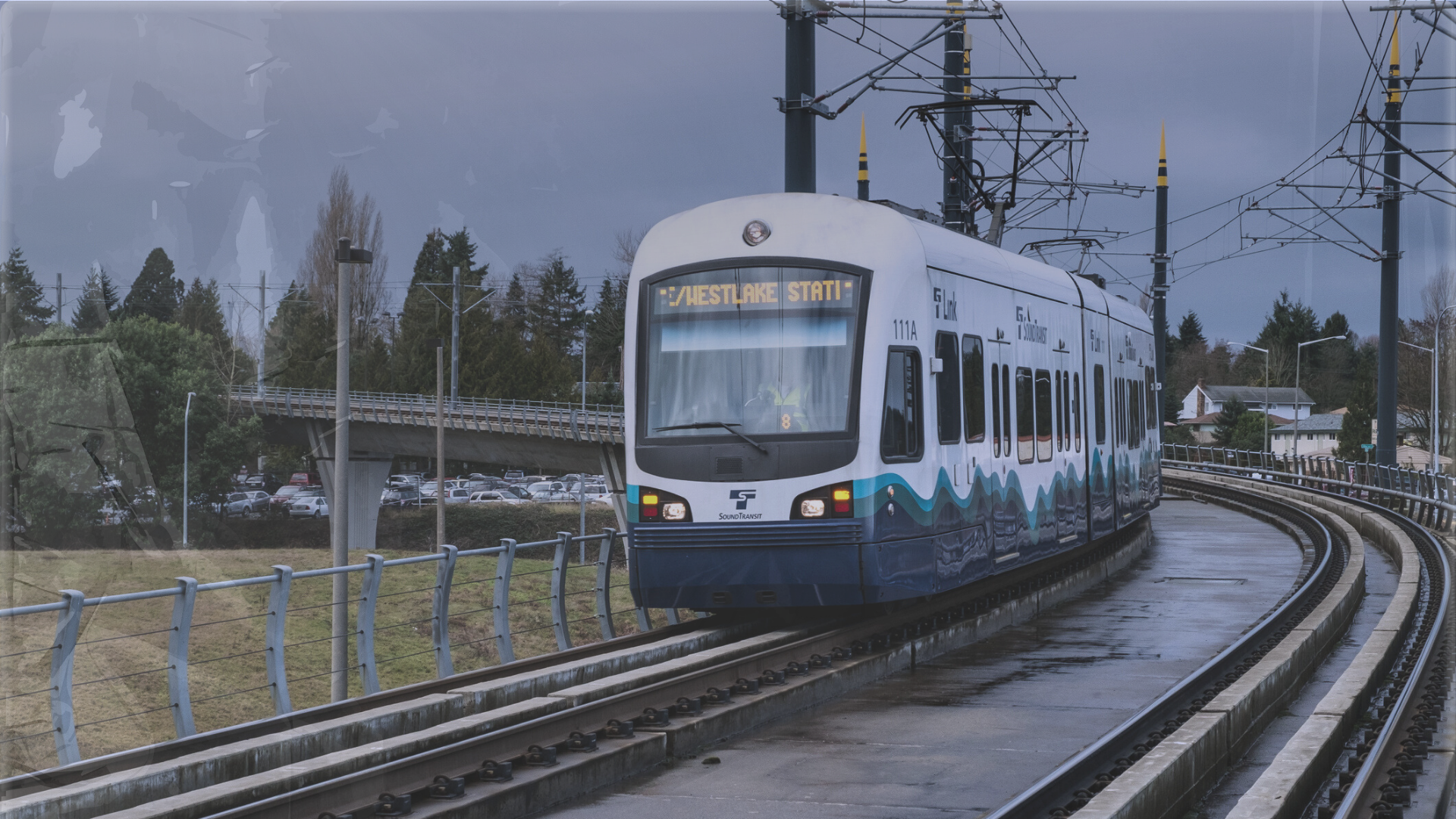Download a PDF of this Policy Note with sources and citations here.
Key Findings
- The Sound Transit Board consists of 18 members, including the Secretary of the Washington State Department of Transportation. Fourteen of the members are hand-picked by the King, Pierce and Snohomish County executives.
- The appointment structure of the Board shields members from direct public accountability for cost overruns and broken promises.
- The Citizen’s Oversight Panel appointed by the Sound Transit Board has included members of pro-transit nonprofits and companies that have received Sound Transit contracts, and has been found to suffer from poor ethics and serious conflicts of interest.
- Sound Transit officials regularly change their definition of success when they fail to deliver projects within projected timelines and budgets. They have historically overpromised benefits and underestimated costs.
- The insulated Sound Transit Board should be held accountable for how they spend taxpayer dollars through an election, rather than appointment, process.
The governance structure of the Sound Transit Board
Voters in the Sound Transit taxing district will get to decide this November whether or not they want to be indefinitely taxed in order to fund Sound Transit’s light rail extensions in Sound Transit 3 (ST3).
The Sound Transit Board that unanimously approved the regressive $54 billion-dollar tax package to go to the ballot consists of 18 members, including the current Secretary of the Washington State Department of Transportation. Fourteen of these members are hand-picked by the King, Pierce and Snohomish County executives. In fact, a majority of the members are picked by the Sound Transit Board Chair and King County Executive Dow Constantine. This structure of appointment versus popular election shields the Board and the Sound Transit staff from direct public accountability.
Consequently, the Board members are selected for their loyalty to Sound Transit rather than to their constituents. Over its 22-year history, very few members have challenged the organization, and those that have, like former King County Councilman and Sound Transit Board member Rob McKenna, were removed from the Board.
Major decisions about adoption of system plans, amendments, annual budgets, annexations, board composition and executive director employment require a two-thirds favorable vote. Members serve staggered four-year terms.
Sound Transit’s Citizen’s Oversight Panel focused on advocacy rather than oversight
Sound Transit claims they are held accountable through the 15-member Citizen’s Oversight Panel (COP), but the panel members are appointed by the Sound Transit Board. Moreover, applicants must adhere to Sound Transit’s Ethics Policy, which requires that:
“All Sound Transit Board members, officers and employees devote their best efforts and attention to…strengthening public confidence in the integrity of Sound Transit’s decisions…”
In other words, they are to be Sound Transit’s advocates rather than a truly independent panel.
A 2012 performance audit of Sound Transit found the panel to suffer from “poor ethics [and] a poor understanding of its mission.” Panelists have included members of pro-transit nonprofits and companies that have received Sound Transit contracts, which the Auditor found to be a poor regulation of outside interests.
At the time of the audit, one panel member had served as a Sound Transit Board member in the 1990s and seven members had submitted letters of interest to the Board that focused on their support of Sound Transit’s mission rather than any interest in the oversight function of the COP. It comes as no surprise then that panel members were found to have participated in “highly visible” pro-transit political advocacy, which raised questions about their ability to be objective and ethical.
The audit also found that the panel acted more as an advisory rather than an oversight committee. In 2008, Sound Transit’s former CEO stated, “[The] COP’s role has clearly been oversight and if members want to change that in ST2, they can recommend it; however, there is the danger of losing [the] COP’s perceived independence [emphasis added].” The unelected COP often focused on areas that voters never approved and could do so without fear of being replaced because they were (and still are) appointees.
As a result of the composition of the appointed panel by the appointed Board, the COP does not contain any substantial diversity of views on Sound Transit proposals like ST3, which further insulates the Board from accountability and any actual oversight.
Measures of success
Sound Transit outlines several ways that officials measure their success, the first three being:
- High-quality projects are completed on time and within budget
- Services are well used with high customer satisfaction
- Checks and balances ensure accountability to the community
Sound Transit officials have a pattern of regularly and unilaterally changing the definition of success to avoid being held publicly accountable for their failures.
- First, Sound Transit officials consistently overpromise benefits and underestimate costs. In 1996, Sound Transit officials promised voters they would build 25 miles of light rail by 2006 for a total cost of $1.8 billion. They called this “Sound Move, the 10-Year Regional Transit System Plan.” Fifteen years later, Sound Transit officials reduced the plan to 21 miles and only delivered 17 miles for an increased cost of $2.6 billion. Sound Transit’s system was smaller and more expensive than they promised voters it would be.
This is further echoed in the state auditor’s 2007 performance audit that concluded the “Agency faced challenges in delivering capital construction contracts for the initial segment of the Link Light Rail Project. Throughout the course of initially planning, designing and building the system, the Agency experienced delays and cost overruns. As a result, it was unable to complete the Link Light Rail Line at the cost and within timeframes communicated to voters in 1996.”
Sound Transit officials use University Link as an example of their ability to be on time and on budget, but this extension was promised to voters in 2006, not 2016. Extending a deadline to accommodate an inability to meet it does not make the agency less late. Additionally, the 45th Street station beyond the University Link endpoint has been delayed 15 years to 2021.
- Second, services are not as well used as Sound Transit officials promised they would be. Sound Transit officials promised that Seattle and Tacoma light rail together would carry 32.6 million trips per year, or 107,000 per weekday, by 2010. As of the end of June of 2016, Seattle light rail has an average weekday ridership of 64,904 and Tacoma Link ridership is sitting at 2,927 per day. Taken together, these two light rail lines are at about 68,000 per weekday, which is 64% of where taxpayers were told they would be in 2010.
If Sound Transit’s ridership projections reach 144,000 (midpoint of the range) new transit boardings by 2040, ST3 will only serve 0.7% of all daily trips, and new transit riders will account for less than 2% of the projected 3.7 million people Sound Transit officials are expecting in their region.
In other words, Sound Transit officials do not expect to serve the growing population they frequently cite as a justification for the regressive ST3 tax increases.
- Third, the checks and balances that are in place have ensured the Board remains insulated, rather than accountable, to the public. In addition to the aforementioned Citizens Oversight Panel, Sound Transit officials state on their website that they are one of the “most scrutinized” public agencies in the state, with a “strong record of receiving clean financial audits from the state of Washington.” One such check and balance is through the Washington State Auditor’s Office.
With regard to the Board structure, the auditor stated in 2012, “When citizens cast their votes for most of these city and county officials, they have no way of knowing whether or not they will one day serve on the Sound Transit’s Board, or the positions they may take if appointed…Sound Transit voters have no say regarding who will represent them and limited recourse if they are dissatisfied with the decisions of Sound Transit’s Board.”
Conclusion
One of Washington Policy Center’s long-standing policy recommendations has been to improve Sound Transit’s accountability and governance structure. The Sound Transit Board should not receive special exemption from the principle of fair and proportional representation, especially when they want indefinite access to taxpayer wallets for a project that they say will not reduce traffic congestion in our daily highway commute.
During the 2015-16 Legislative Session, legislation was proposed by Senator Steve O’Ban and Representative Mark Harmsworth to modify the election and authority of the Sound Transit Board. Senate Bill 6395 received a public hearing but was not voted out of committee. Its companion, House Bill 2734, did not receive a public hearing at all. Neither bill received public debate on the Senate or House floors and both were effectively killed.
While we recognize that it is unrealistic for all cities in the service area to be represented on the Sound Transit Board, individual taxpayers should have a voice in electing and holding Board members, like legislators, directly accountable for cost overruns, broken promises, concerns over subarea equity and delayed project timelines. Modifying RCW 81.112.040 is a good place to start.
Additionally, further discussion should take place about whether or not the Citizen’s Oversight Panel should be appointed by the Board they are tasked with overseeing, or if they should be selected by the legislature to promote objectivity, prevent conflicts of interest, and ensure each subarea has equal representation on the panel.
The Board’s current makeup includes the three county executives (Snohomish, King and Pierce), the Secretary for the Washington State Department of Transportation, and 14 hand-picked officials from just these highlighted cities in the Sound Transit service area:







